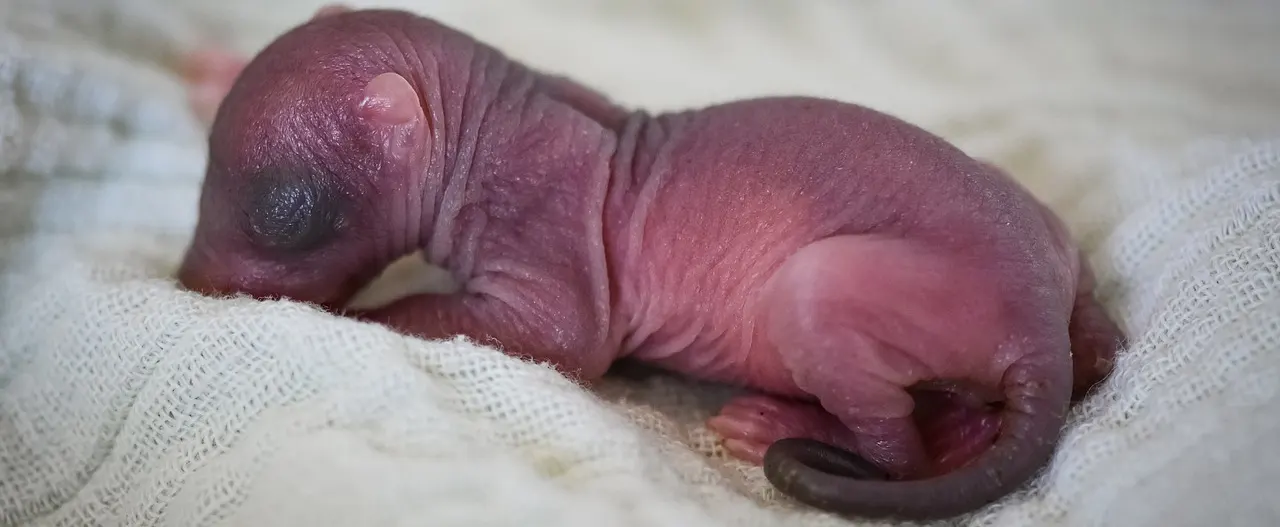Have you discovered what you think is a baby squirrel? Let’s first make sure that what you are looking at is just that.

Identifying a Baby Squirrel
Baby squirrels, also known as kits or pups, have distinct physical characteristics that differentiate them from adult squirrels. The following descriptions should help you determine if you’re dealing with a baby squirrel.
Physical Characteristics
Baby squirrels only measure about 1 to 2 inches long and weigh in around 20 grams, although they grow quite rapidly; doubling their birth weight within the first two weeks. A baby squirrel is born hairless, giving them a pink and somewhat translucent appearance. Their eyes remain shut and their ears remain closed and folded against their heads for approximately 3 weeks after birth. Depending on the species, the fur colour of baby squirrels can vary; common colours include gray, brown, and red. In regards to their tails, they begin as a slender appendage that gradually becomes bushier and fluffier as they grow. In addition, a baby squirrel is born without teeth and they only possess small underdeveloped claws that grow stronger with age. A baby squirrel’s species can be difficult to identify during their early stages of life. It may become more apparent once you can observe their growth rate and fur colour. At this stage the only way to identify the species for sure is by seeing the mother squirrel attending the nest.
Behavior
A baby squirrel is highly dependent on its mother for warmth, nutrition, and protection during its early weeks of life. It would typically remain in the nest for the first few weeks, where the mother can provide constant care and feeding. Once old enough to explore on its own, a baby squirrel will tend to investigate new objects and environments, attempting to learn and recognize potential threats. Interacting with siblings and observing their mother’s behaviour are critical for learning essential survival skills.
Decision-Making & Taking Action
If you believe you found an orphaned squirrel, the first thing you should do is wait. If momma squirrel is still around and able to care for her offspring, she will likely attempt to retrieve them. She will do so during the day - not at night.
Safety
To keep both you and the young squirrel safe, pick it up using a soft towel. A scared baby squirrel may bite.
Creating a Safe Space
If possible, place the baby squirrel in an open box with a heat source, such as a hot water bottle wrapped in a towel. Place the box close to where the little one was found, preferably under a tree and out of the elements (direct sunlight or rain) and safe from predators. Also, please keep pets and children at a distance. Unless and until you are certain that returning the baby to its mother, refrain from feeding.
Reuniting with the Mother (If Possible)
An easily accessible box or container placed under a tree will invite the mother to come and collect her offspring. If the mother has not appeared by the end of the day, it’s time to start caring for your new charge.
Feeding
Before anything else, you need to determine if the squirrel is dehydrated. You can do so by pinching its skin above the shoulder. If the skin is slow (more than a couple of seconds) to flatten back down, dehydration is likely. To rehydrate, give unflavored Pedialyte via syringe every 15-30 minutes. Repeat the pinch test. Ok, now that the baby squirrel is no longer dehydrated, what do you feed a baby squirrel? If available, something like KRM (kitten replacement milk), Esbilac, or even baby formula will do in a pinch.
Ethical Considerations
When a baby squirrel is found orphaned and raised by humans, it can become quite tame and accustomed to humans. This isn’t a good thing, if it is to be released back into the wild. Oftentimes, wildlife rehabilitators keep human interaction to a minimum to ensure that the squirrels can be successfully released back into the wild and exhibit natural behaviours.
Prevention
The best way to prevent the discovery of an orphaned squirrel is to keep squirrels out of your yard.
Yard Maintenance
- Remove bird feeders or install squirrel proofing;
- Secure your trash bins;
- Prevent access to sheds or spaces under your deck;
Get Help with Hawkeye!
If squirrels are a problem around your home or yard, and regular maintenance can’t keep them at bay, it may be time to call in the experts. Hawkeye Bird & Animal Control will not only help with immediate squirrel removal, but also help you secure your home to prevent future squirrel invasions.














